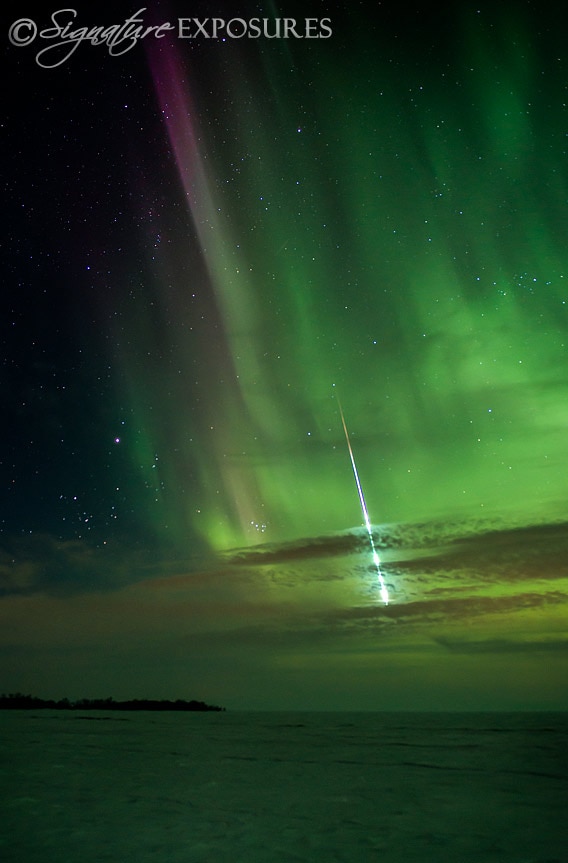Create a free profile to get unlimited access to exclusive videos, sweepstakes, and more!
Fires in the Sky

I really wasnât planning on posting any more photos of comet C/2011 L4 (Pan-STARRS), since I figured it was tapped out.
I was wrong.
But first, I want to show you an astonishing photo taken by photographer Shannon Bileski of Manitoba. She was out doing some shooting when she heard there might be northern lights popping up. She got in her car, drove to a good spot near Lake Winnipeg, and starting taking pictures.
Getting good shots of an aurora is hard enough, taking some degree of luck. But what she got was just freaking amazing:
By coincidence, a bright meteor streaked through the sky as she was taking the picture above on Mar. 29, 2013. I might even call it a fireball; it clearly got far brighter even than Jupiter, which you can see on the left (just off the V shape of the horns of the constellation Taurus). It was no Chelyabinsk meteorâthank goodness!âbut it was still pretty intense.
In a shot like this you donât get the 3D perspective that helps you figure out distance. Usually in a picture of the sky the objects you see are all at vastly different distances; clouds might be a few kilometers up, while the stars, of course, are trillions of kilometers distant. But as it happens meteors and aurorae both occur at roughly the same altitude: 100 kilometers.
At that height, the air is dense enough that the pressure from the incoming chunk of rock compresses it, heating it up so that it can glow. Itâs also at the right density to interact with subatomic particles blasting in from the Sun. Those particles energize the atoms in the air, causing them to glow. The green color comes from oxygen, while red can come from both oxygen and nitrogen.
What this means is that the meteor and the aurora are pretty much coincident in space; itâs not just a perspective effect. Thatâs cool.
But wait! Thereâs more!
A week or so earlier, on Mar. 20, my friend Babak Tafreshi was out taking night sky shots and caught comet Pan-STARRS with a burst of auroral activity:
You can see the comet over the mountain range; the aurora became quite strong just minutes later. He was lucky to get both in the same shot. A few minutes either way and he would have missed one or the other. Incidentally, Shannonâs friend Sheila got a cool shot of the comet seen in the aurora. Wow.
Babak also made this lovely time-lapse animation of the images he took showing the comet setting, and then the aurora coming to life:
Iâve seen comets, and Iâve seen meteors (and Iâve seen sunny days I thought would never end). But Iâve still not seen a good aurora. Babak was in Tromsø, Norway, where a lot of photographers get amazing shots. I wonât be able to get there any time soon, so maybe itâll have to wait for the next solar activity maximum in 2024 or so. In the meantime, I really hope I get a chance to see this ethereal beauty someplace closer.
I do love posting incredible pictures and video like these, but thereâs nothing like seeing it for yourself. Some day.
Tip o' the lens cap to Geoff Kirbyson at the Winnipeg Free Press and Dan Neufield.














